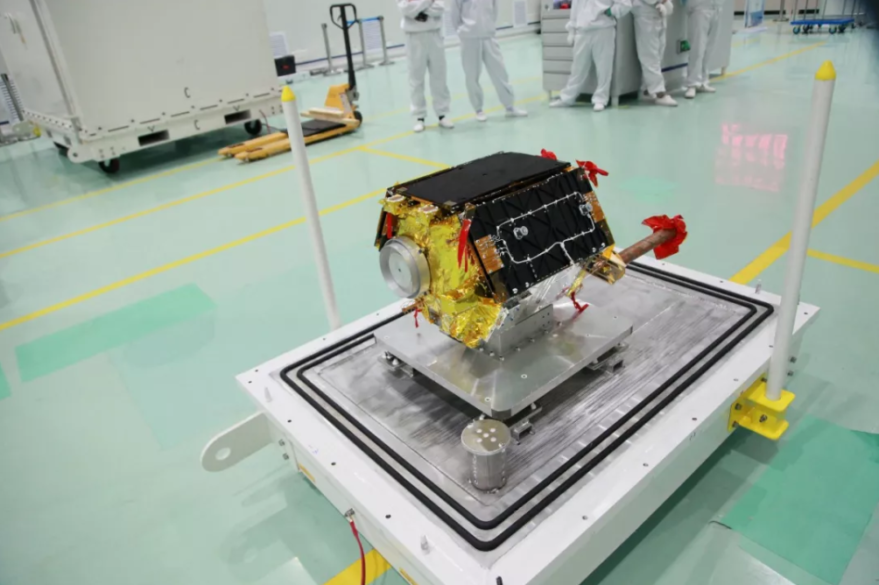Products You May Like
HELSINKI — China is to oversee the construction and operation of a national satellite internet megaconstellation through coordinating the country’s major space actors.
Recent comments by senior officials indicate that plans are moving ahead to alter earlier constellation plans by space sector state-owned enterprises and possibly make these part of a larger “Guowang” or “national network” satellite internet project.
Spectrum allocation filings submitted to the International Telecommunication Union (ITU) by China in September last year revealed plans to construct two similarly named “GW” low Earth orbit constellations totaling 12,992 satellites.
The filings indicate plans for GW to consist of sub-constellations ranging from 500-1,145 kilometers in altitude with inclinations between 30-85 degrees. The satellites would operate across a range of frequency bands.
Bao Weimin, a senior official with the China Aerospace Science and Technology Corp. (CASC), China’s main space contractor, made a first public acknowledgement of the megaconstellation plan in an interview with Shanghai Securities News March 7, stating “we are planning and developing space-based internet satellites and have launched test satellites.”
“A “national network” (Guo Wang) company will also be established to be responsible for the overall planning and operation of the satellite internet construction,” Bao added.
On Monday Ge Yujun, president of China Spacesat Co., Ltd., a CASC subsidiary, told ThePaper that the Hongyan and Hongyun broadband constellations previously planned CASC and sister state-owned giant China Aerospace Science and Industry Corporation (CASIC) respectively would be altered by authorities.
Ge said that “relevant national departments” are conducting overall planning for constellation construction and that he understands that the original plans for Hongyan and CASIC’s Hongyun will “undergo major changes”.

Both constellations, announced around 2018, were to consist of hundreds of communications satellites in low Earth orbit. A handful of technology verification satellites have since been launched. CASC was planning to have an initial 60 Hongyan satellites in orbit by 2022.
The comments suggest that the older constellations may form part of the new, larger “national network” project.
It is unclear how the project will proceed but the development of satellite internet has become a national priority.
China’s National Development and Reform Commission (NDRC) added “satellite internet” to a list of “new infrastructures” in April 2020.
The recently approved 14th Five-year Plan for the period 2021-2026 and “long-range objectives through 2035” call for an integrated network of communications, Earth observation, and navigation satellites.
China has already constructed its Beidou navigation and positioning system and is deploying Gaofen satellites for its China High-resolution Earth Observation System (CHEOS).
Additionally private enterprise Galaxy Space in 202 launched its Yinhe-1 to test Q/V and Ka-band communications. Beijing Commsat Technology Development Co., Ltd., earlier this year received government funding from the China Internet Investment Fund (CIIF) for research and industrialization of satellites. It is unclear what role, if any, such firms will play in the national network project.
Ian Christensen, director of private sector programs at Secure World Foundation, sees the “GW” or national network project as potentially serving a number of goals for China. These include supporting domestic technology and economic development goals and contributing to China’s soft power diplomacy and regional leadership efforts.
“Development of the constellation will also provide domestic employment, anchor space-related industry clusters, and contribute to economic development through serving and enabling domestic connectivity needs,” Christensen says. He adds that the project could also be used as a tool for soft power, as part of the Belt and Road Initiative or diplomacy efforts in nearby regions.
With constellations such as SpaceX’s Starlink and OneWeb already underway and Amazon this week ordering Atlas 5 missions for its Kuiper broadband satellites, the planned GW constellation brings even more urgency to the need to address issues related to the deployment of megaconstellatons including space debris and space traffic management.
“I personally would take the likelihood of the successful deployment of the GW constellation seriously. It should place further emphasis and urgency on the need to improve global coordination practices for the deployment and operation of large constellations,” Christensen says.
“Space safety is an area where there are shared interests between U.S and Chinese actors, including both government and private sector actors, but overall geopolitical trends make meaningful dialogue challenging.”
Proposed and developing megaconstellations are raising concerns of the heightened risk of orbital debris. The growing number of satellites in LEO is also a threat to visible astronomy.
